Heat Healer Versus HigherDOSE Comparison: Best Infrared Sauna Blanket Battle
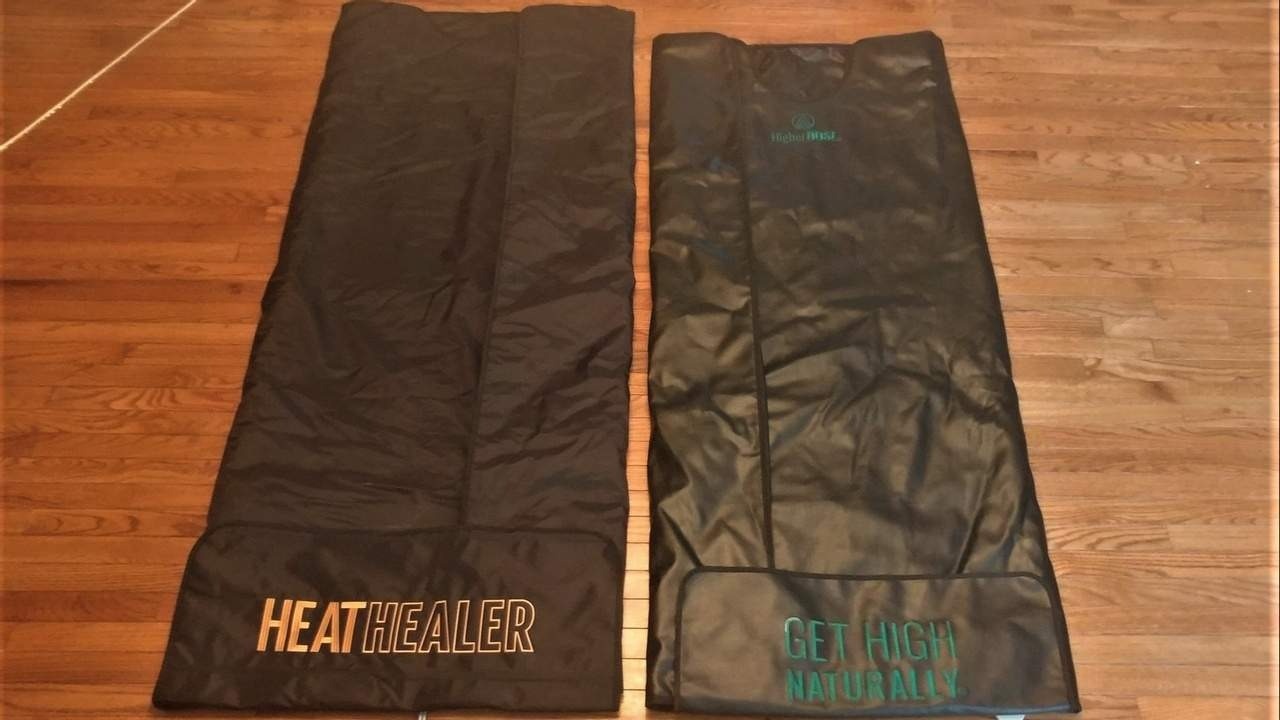
Of any habit I’ve adopted in the last several years, the sauna by far has the most noticeable effect on my well-being. If I could only recommend one health hack to anyone, it would be the sauna. Sauna users are simply less likely to die.
That risk includes dying from rom any cause.
But there's more:
Sauna use lowers blood pressure, reduces inflammation, reduces the risk of Alzheimer’s, helps treat depression, and has so many other benefits. If you'd like to learn more about this topic, read Alex's blog about the 20 most incredible infrared sauna benefits.
But, how to ensure you're getting all these benefits regularly?
Different Sauna Methods
The easiest way for most people to gain access to a sauna is with membership at a gym. Most gyms and saunas, of course, shut down because of the virus during 2020. This prompted me to take a close look at alternatives.
One option is to install a sauna into your own home. For a few thousand dollars, you can have any-time access at the ready.
But I wasn’t sure I planned to stay in the same location for long, so given the price, this wasn’t a great option. Then it occurred to me to look at portable sauna substitutes. One common option in this category is the portable pop-up tent sauna. But all the reviews gave me pause. I read particularly often about them melting down or catching fire.
So, what now?
Sauna Blanket Benefits
Then I came across the idea of a portable sauna blanket. This first appeared to me with the sauna blanket from HigherDOSE, which I reviewed HERE.
The sauna blanket seemed to be the most viable concept, for several reasons. These blankets are:
- Very easy to transport, take out, then tuck away
- More reliable than same-priced tent saunas (judging by my reading of reviews)
- More convenient to access at home, compared to going to a gym
- Several times cheaper than a full home sauna
But, only looking at the benefits doesn't give you the full picture. Therefore:
Sauna Blanket Downsides
And yet, I’m not as excited by portable saunas now. Now that gyms have re-opened, I can compare blankets and full saunas back-to-back.
I don't get the same “high,” or sense of well-being, without the heat levels I reach at my gym (~190°F). I suspect not having my head immersed results in fewer brain benefits and endorphins.
I tend to feel less energized after using a blanket compared to a full sauna. I wonder if blankets make me sweat faster than they provoke “heat stress.” I started having muscle spasms at night when I was using the blanket daily, for instance.
This has never happened to me before. Even with a sauna routine of two rounds of ~190°F for half an hour many days per week, I never got this side-effect! As we discussed in our review of the HigherDOSE sauna blanket, detoxification through sweat is definitely one benefit of sauna use. But it is far from the main purpose.
So, be sure to read the original HigherDOSE review for more discussion of the scientific benefits of the sauna!
Sauna Blankets Versus Full Saunas - Either Finnish Or (Far) Infrared
For anyone who can get to a full sauna, whether at home, a spa, or a gym, I would give my highest recommendation to that. Find the highest temperature you’re comfortable with, and stick it out as long as you can. Then try to increase the heat or duration a little bit each time.
But when buying a full sauna isn't an option, I still consider sauna blankets the best alternative.
I will definitely be keeping and using mine - when I can’t get to a full sauna. When I take time away from the sauna, my sauna endurance drops—fast. With a couple weeks off, I go from being able to last half an hour at a time to only lasting fifteen minutes.
If I use a blanket during my off time, I don't lose it nearly as fast. Then I can get back to full intensity much faster. So, the sauna blankets certainly are doing something, the technology is just not quite up there compared to the benefits you're getting from a regular sauna.
Comparing the Heat Healer and HigherDOSE
In this section, I'm comparing both the HigherDOSE blanket and the Heat Healer point by point:
Blanket Design
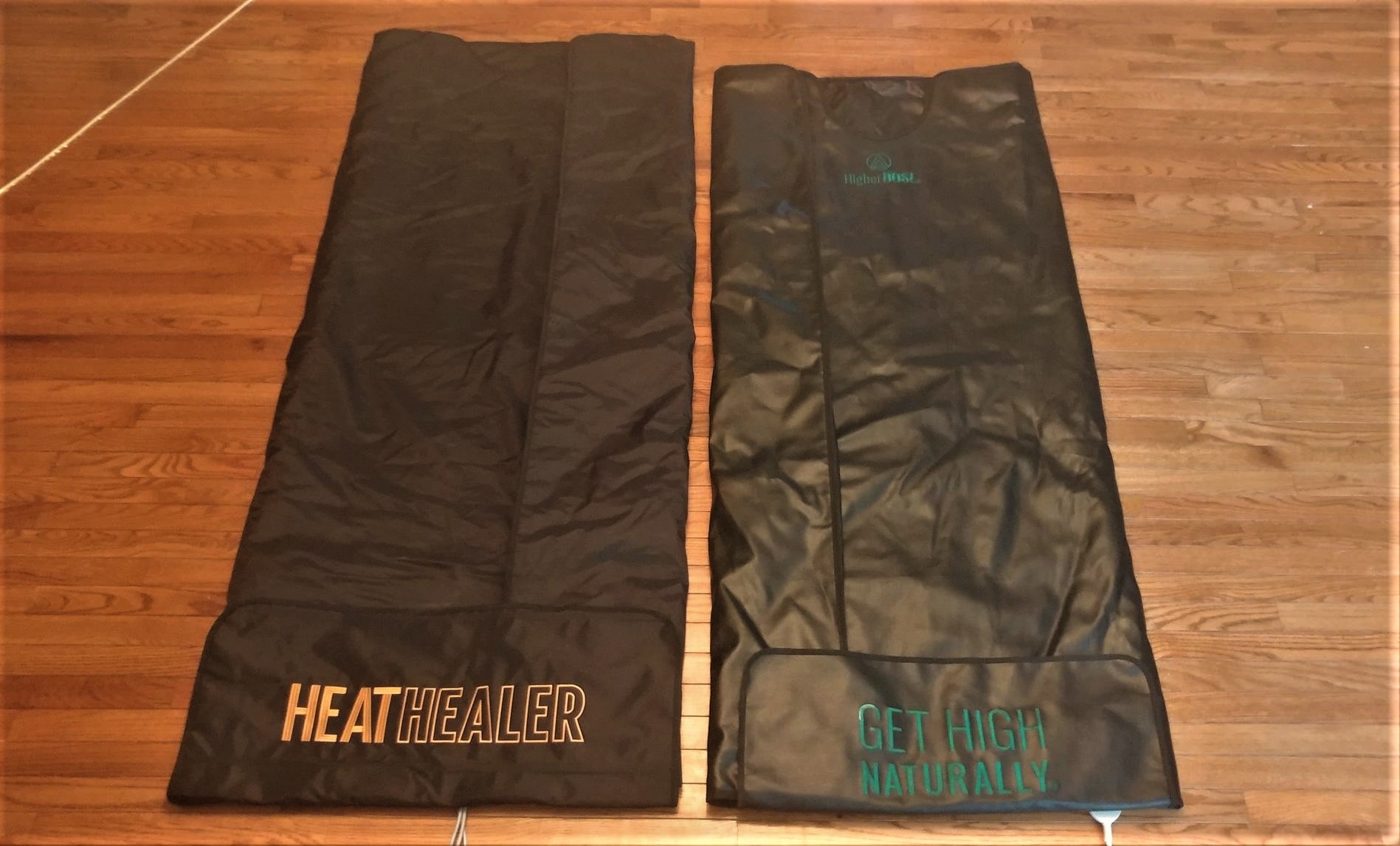
The Heat Healer has a few extra inches of length on the HigherDOSE blanket. The opening for the neck and face also doesn’t come down as low. As a 6'2" user, this made it much easier for me to feel immersed in the Heat Healer.
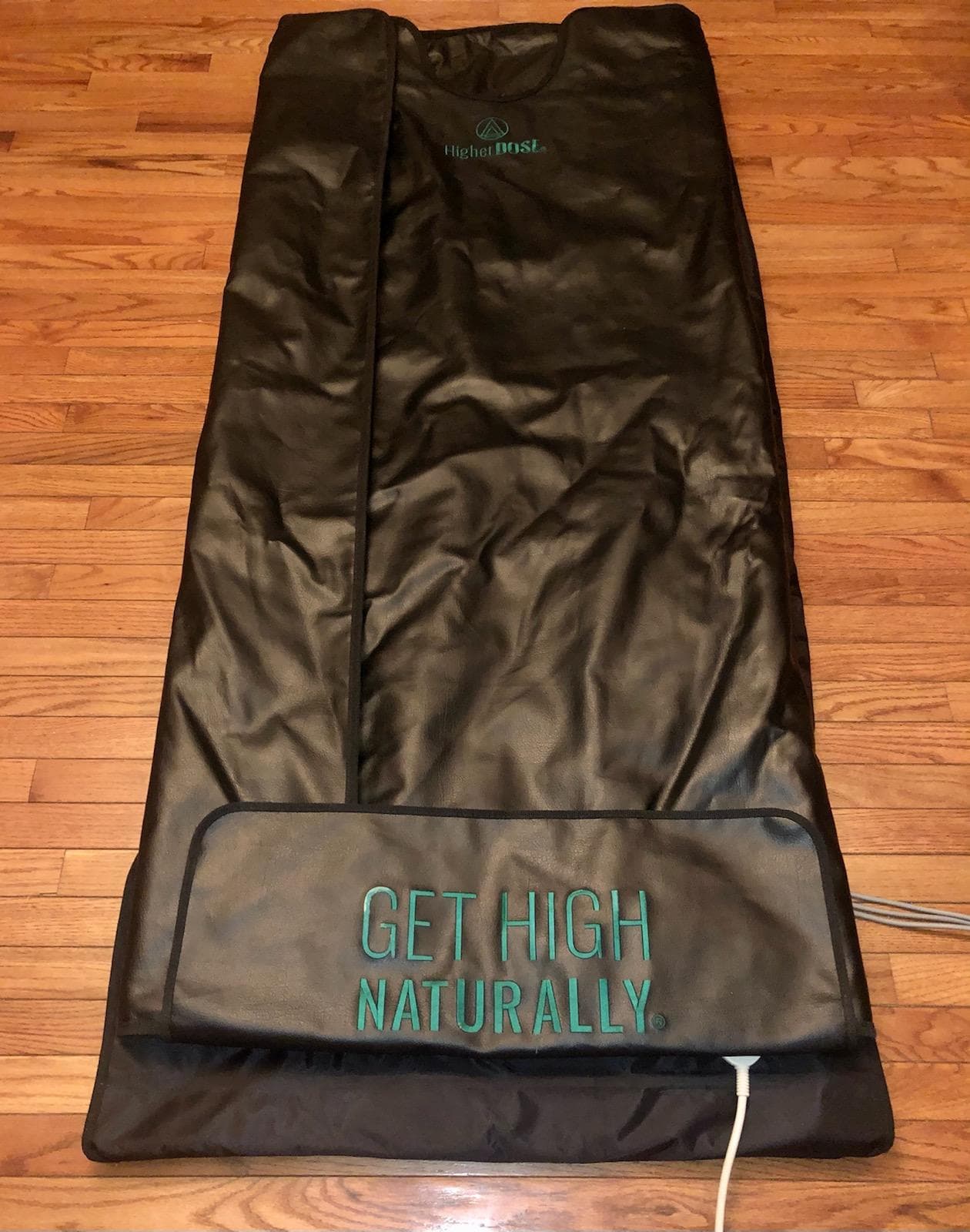
The blankets also “drape” differently.
In my review of the HigherDOSE blanket, I described the blanket forming “hot spots.” Depending on how I positioned myself, I found the top layer could fall down and make contact with the bottom. When this happened, it would create a spot that became hot enough to be a little painful if touched by bare skin.
On the plus side, the Heat Healer doesn’t fall down on itself and form these “hot spots.” But the more spacious interior means it also doesn’t trap the heat in quite as effectively.
In trying to figure out why I had this experience, I noticed a key difference between the two blankets. Once they're wrapped up, the two blankets have about the same width. But the widest flap that wraps over the top of the blanket is actually quite a bit wider on the Heat Healer.
The image below shows the HigherDOSE’s widest flap (left) on top of the Heat Healer’s (right). There’s a space between where the HigherDOSE’s flap on top ends and a visible crease shows on the Heat Healer. That's the extra width the Heat Healer's flap has over the HigherDOSE's.

I found it easier to feel immersed in the Heat Healer, but more difficult to cover up the top opening. The wider flap formed a larger dome shape curving over the top of my body.
What works best comes down to preference and personal differences which layout would work better for you.
The Heat Healer would clearly work better for larger users, for example. The HigherDOSE (left) also has shoulder flaps to help cover the top of your body and trap a little more heat in.
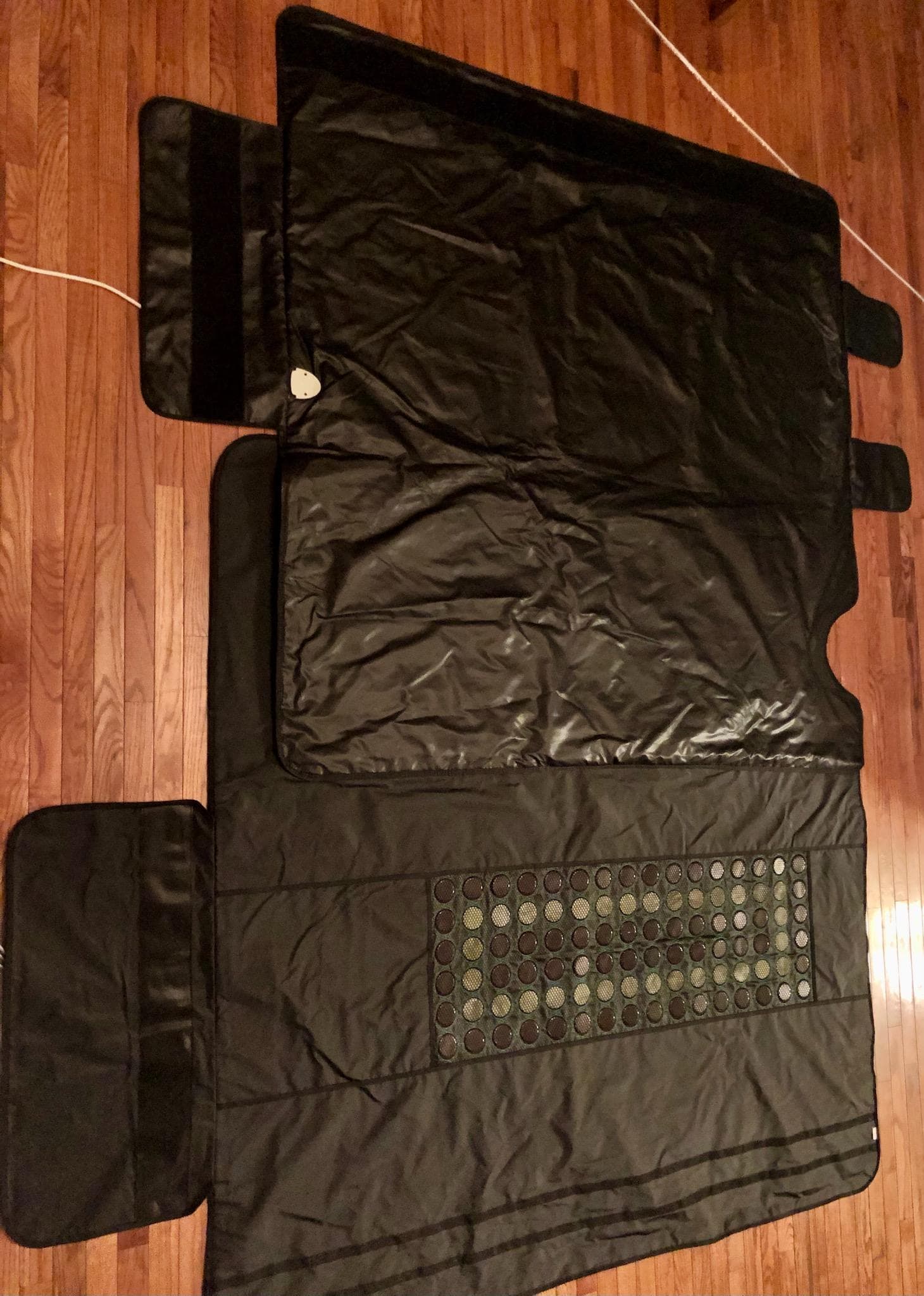
With the HigherDOSE, I found it difficult to close the whole blanket without drafts in the bottom corner. I ended up using the blanket while laying on an incline. Then the towel I placed to cover the opening would also catch all my sweat as it fell down.
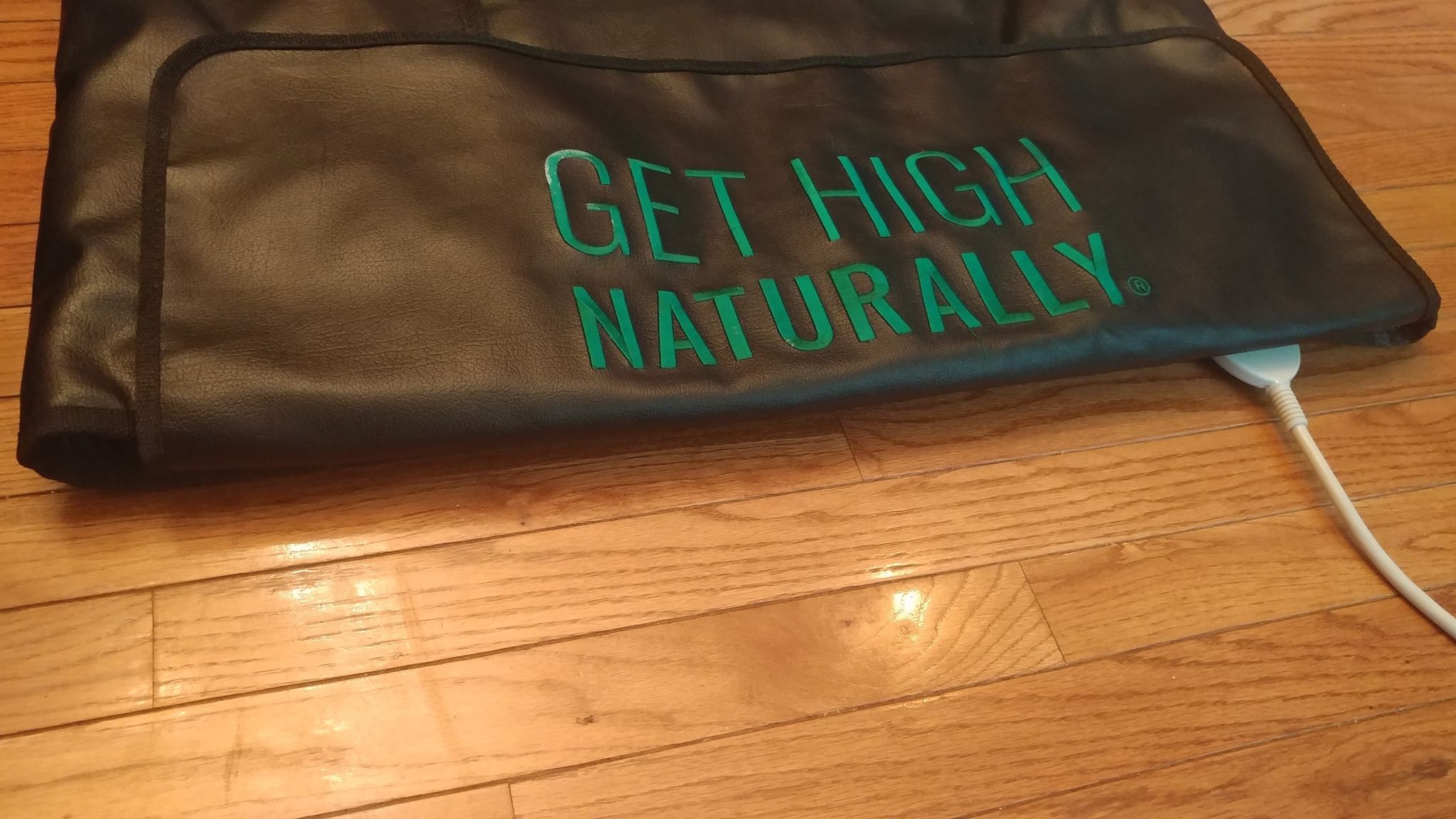
The bottom flap of the Heat Healer is wide enough that it doesn’t have this issue:
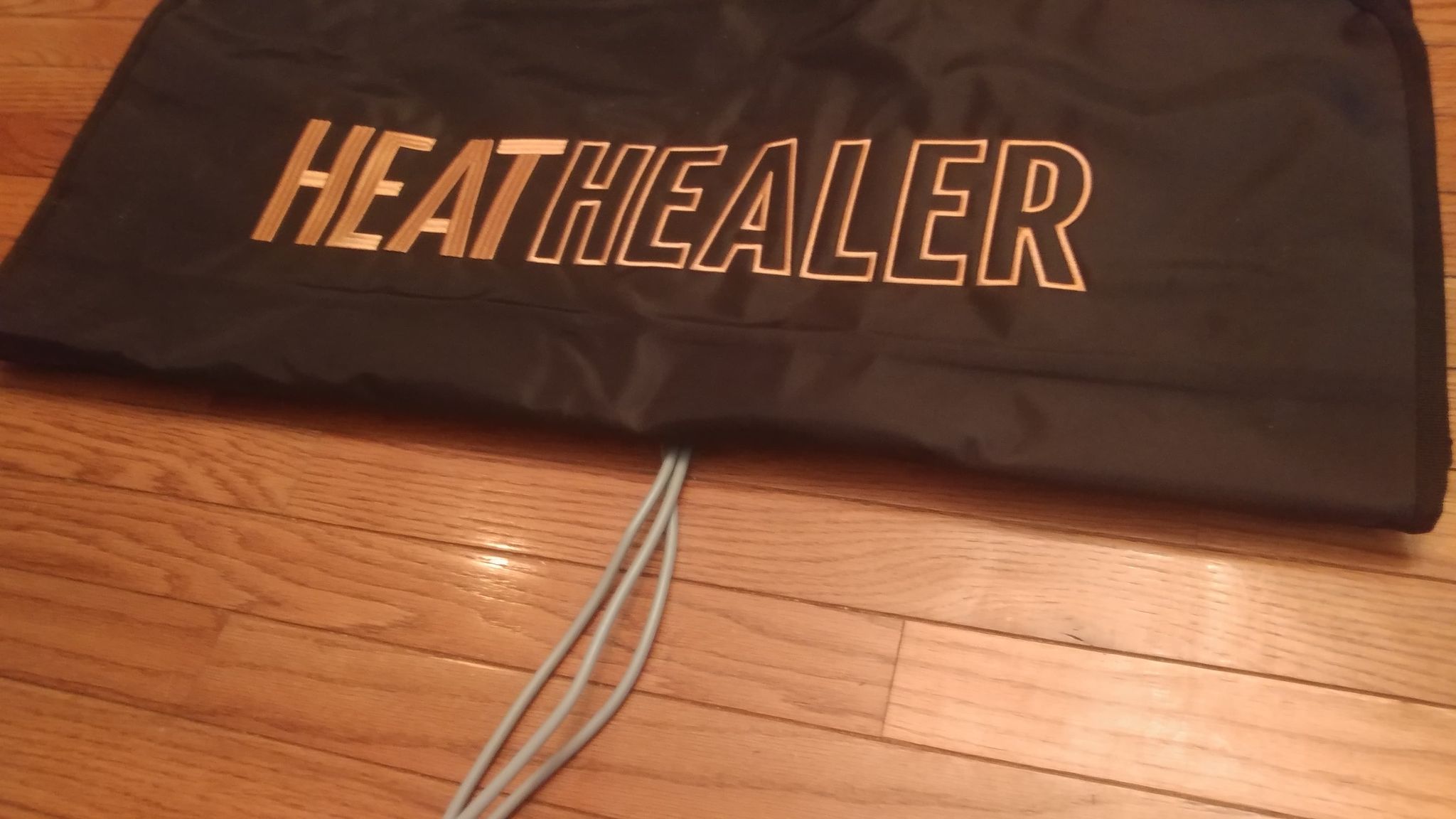
One problem with the Heat Healer for me is that it’s less sanitary to use with less clothing and towels. Both blankets contain materials like tourmaline meant to help disperse the infrared heat evenly.
On the Heat Healer, jade and tourmaline stones are visible on the bottom of the blanket under mesh. This difference gives the Heat Healer a more refined ‘look’ than the HigherDOSE.
But if you sweat into this part of the blanket, the Heat Healer is particularly difficult to clean. It would be an improvement if the user could open the mesh or detach this section of the blanket. Even with clothing and towels in place, it isn't difficult for sweat to get down into this area.
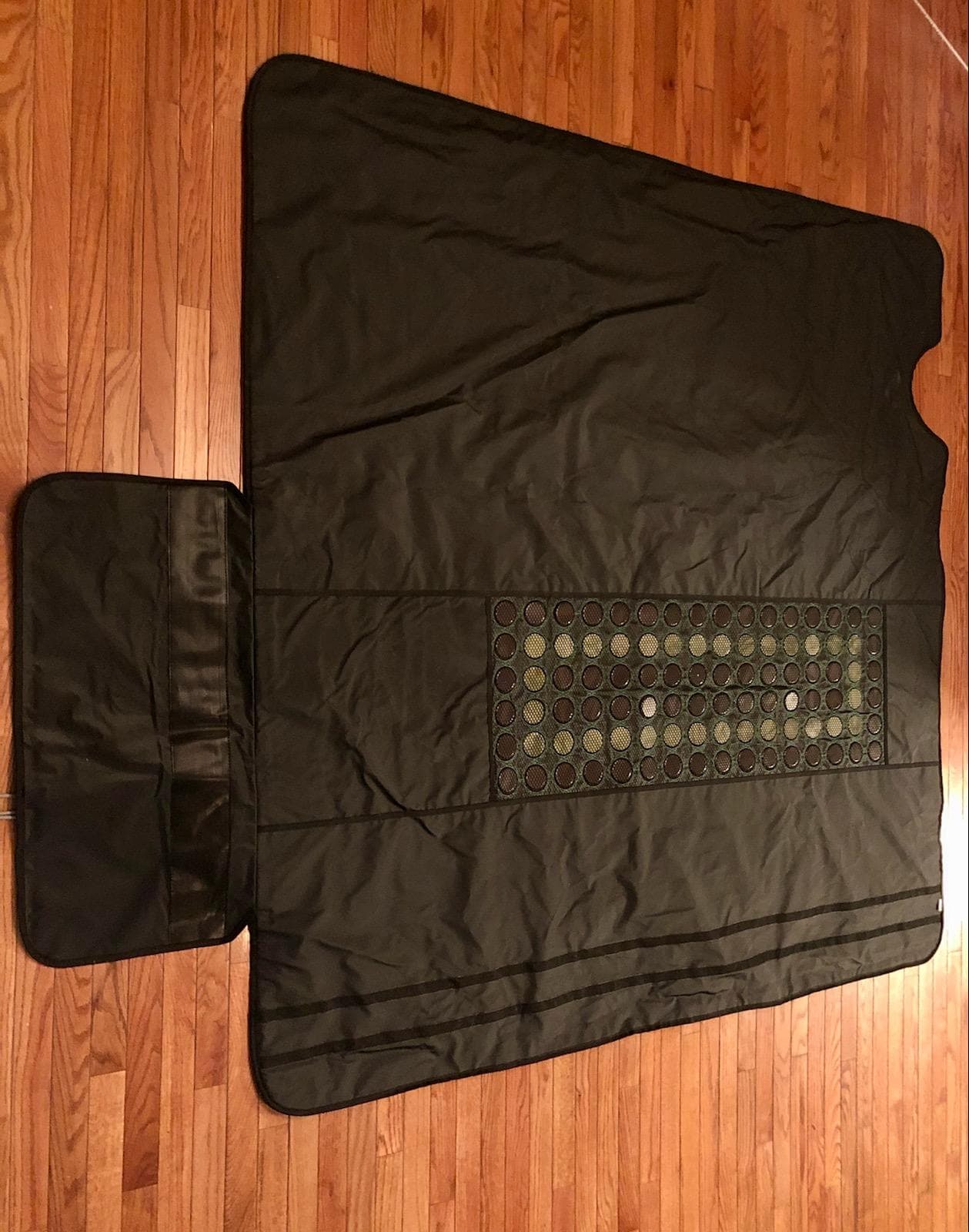
So, at this point, the outcome is a draw between both blankets...
Next up, let's consider the control units:
Control Units
The control units are what you use to turn the device on and to regulate temperature:

The HigherDOSE’s control unit is much smaller and lighter.
The Heat Healer’s control unit is bulkier and heavier, but much more durable. During the review, Heat Healer discovered the units could malfunction if left plugged in when not in use. They sent us a replacement unit free of charge, as they did with all owners of the prior unit. They did this even though the manual already advises against leaving the unit plugged in when not in use.
(So props for Heat Healer's support service!)
The Heat Healer heats three zones to separate temperatures. As each zone warms up, an exact temperature reading displays on the screen. This way, if drafts are causing a particular zone not to fully heat, you can see this and address it in real time.
The HigherDOSE puts out heat at one setting across the whole blanket. The unit displays a number from one to nine that tells how close the blanket is to its own max setting. There's no confirmation that the blanket actually is as warm as the heat level the unit is putting out.
If you don’t care about these features, the HigherDOSE's unit is easier to move and transport. If you care less about portability, the Heat Healer's unit wins on everything else.
Returns & Warranty
The Heat Healer has a superior warranty across the board. Unopened blankets can be returned within 30 days, while HigherDOSE allows 14 days. Used Heat Healers can be returned within 30 days for a 50% refund minus shipping, while Higher Dose doesn’t allow returns of used blankets at all.
Defective Heat Healers are covered for a 2 year limited warranty period, while the HigherDOSE’s limited warranty only lasts for 1 year.
If you'd like to learn more about the details, read the Heat Healer FAQ and HigherDOSE FAQ - both pages contain some good info about these topics!
Miscellaneous - Toxins, Pillows & EMF
Here's the last section of this comparison:
A few miscellaneous properties of each product that might tip the equation into favoring one above the other?
Accessories
Right now, the Heat Healer comes with a waterproof pillow. The pillow is quite nice and increases comfort when you're using the unit.
The HigherDOSE blanket does not come with such a pillow, normally. However, one benefit of the HigherDOSE is that you do have the ability to buy an insert for their blanket, which helps you scoop up the heaps of sweat after a session.
That insert is not standardly included, however, so I cannot give bonus points to HigherDOSE here.
The insert costs $69, excluding shipping, and is a great addition to the HigherDOSE value proposition. I just wanted to mention this option because people might be interested in it. For many people, replacing towels to scoop up the sweat with an insert is a game-changer. Many reviews online like this option.
But, because only Heat Healer offers a free waterproof pillow, I'd say they win this round.
EMF Reduction
One of the questions I got about my article on the HigherDOSE is what the EMF exposure is. Unfortunately, I don't have any means to test the EMF levels of my products, right now.
Nevertheless, Heat Healer claim to have Faraday shielding, so that EMF exposure is minimized and perhaps even fully eliminated. From a physics perspective, the principle of a "Faraday cage" entails that a certain structure of metals prevents EMFs such as radio waves from penetrating that structure.
You can see how Heat Healer accomplished that feat here:
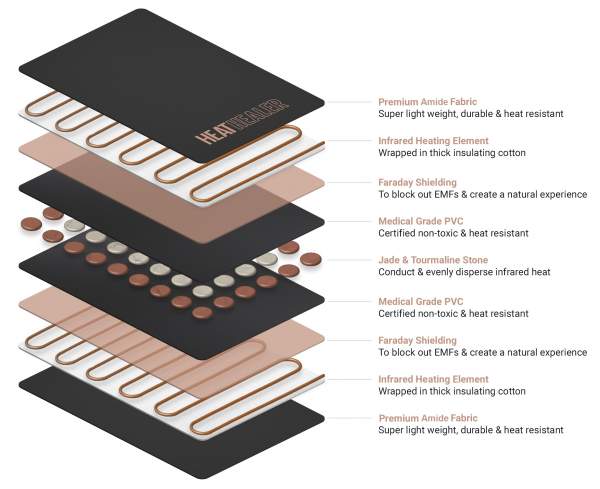
As far as I can tell, the HigherDOSE doesn't offer any EMF reduction. But, because I don't have the ability to test the EMF levels, I'll let this outcome be a draw!
(And, later on, when I do have an EMF meter, this article will be updated with the new outcome!)
Fabric - Aramide Versus Polyurethane
The HigherDOSE, right now, according to their website is made of:
"Waterproof Polyurethane (PU) fireproof cotton."
The Heat Healer, on the other hand, is made from different materials. One of the main materials is "aramide".
Aramids only melt at very high temperatures, of around ~930 Fahrenheit (500 Celsius), so there's far less risk of negative health effects because the compound doesn't become volatile. Also, there have been studies on this compound and the health risk associated with aramides is much lower than originally thought.
If you want to imagine aramids, they are used in kevlar to create a really strong structure.
As a result, the Heat Healer is now compliant with the Restriction of Hazardous Substances, or "RoHS". Simply put, the RoHS is a guideline for removing products harmful to health from electronics.
Polyurethane, on the contrary, is made from oil and can become volatile and potentially affect health in a negative way. While probably not a toxin of extreme concern, like mercury or PFAS, there are health concerns with polyurethane.
And, no, I haven't made a sample of these products and send it off to the lab. But, if we were to believe the companies producing both blankets on their own words, then Heat Healer does a better job here.
And, given that Heat Healer does produce a product without polyurethane - a product that is regularly heated up so the compounds may become more volatile - I think Heat Healer is the winner in this category.
Price
The HigherDOSE, without discounts, costs $499. The Heat Healer is priced slightly higher, at $568, when no discounts are applied.
Given the fact that the Heat Healer is a slightly better product, the increase in price is justified, in my opinion. In fact, paying $68 more for a better product is almost a no-brainer.
Finishing Thoughts: The Winner Of The Battle Of The Sauna Blankets
Overall, I think the Heat Healer is a more solid product. While you can agree or disagree about the blanket itself, the heating, and the control unit, the EMF-free and better materials where the Heat Healer is made from make it the obvious choice for me.
Both are great products but the Heat Healer has a few features the HigherDOSE doesn't have.
Also, please remember that for the best (infrared) sauna experience, a full sauna is best. My biggest lesson after trying different sauna blankets for over a year is that nothing replaces the real thing.
If you'd like to learn more about saunas then please read Alex's blog posts on the same topic:
Those blogs should help widen your perspective on this topic!
Items Mentioned:
- HigherDOSE infrared sauna blanket
- SunStream Evolve Sauna - say Alex Fergus sent you to save $.
- Heat Healer blanket
Found This Interesting? Then You Might Like:
- Everything You Need To Know About Infrared Saunas
- 20 Incredible Infrared Sauna Health Benefits
- My Experiences With The Niacin Infrared Sauna Detox Protocol
- HigherDOSE Sauna Blanket Review: Game-Changer Budget Home Sauna?
Get FREE Updates & EXCLUSIVE Content
Join Over 30,000+ Subscribers!








